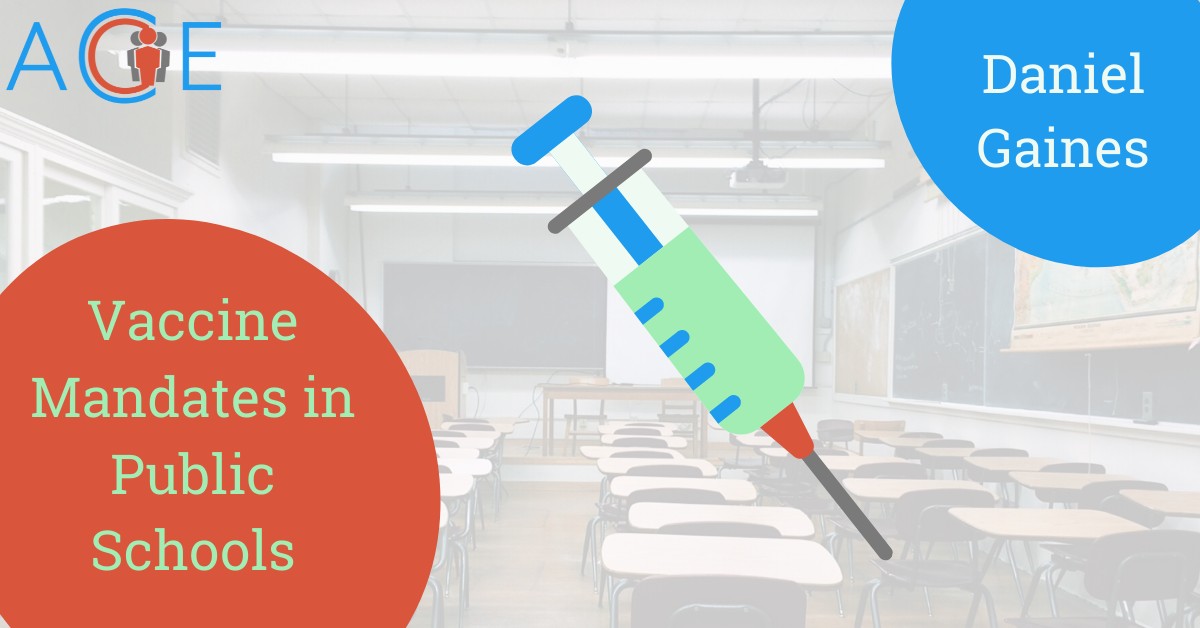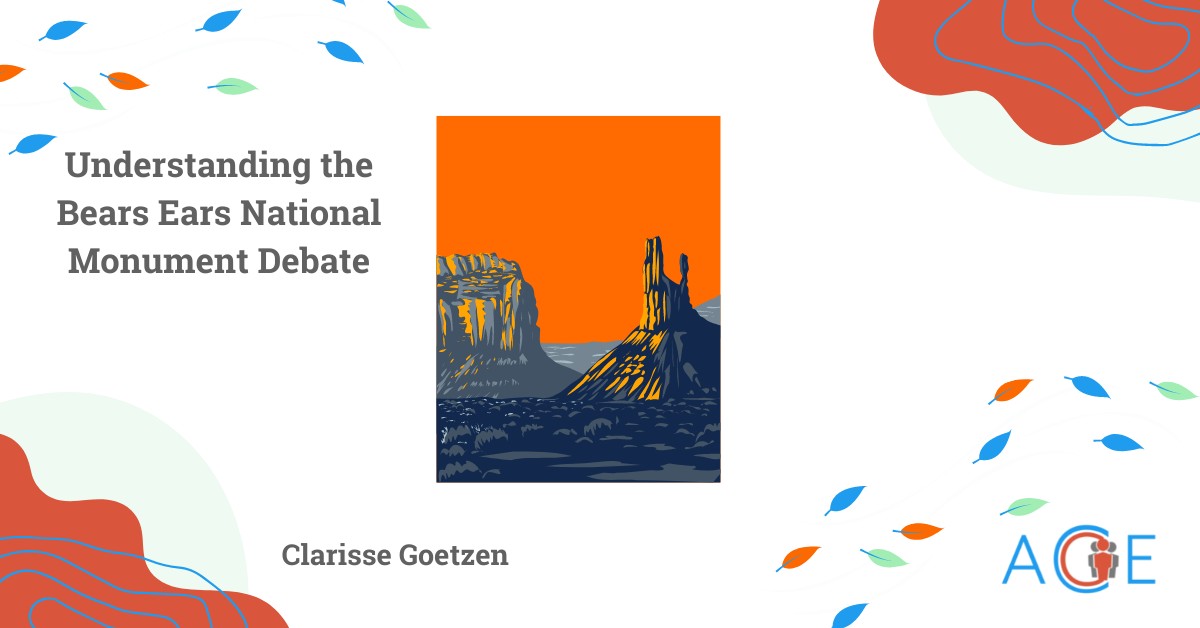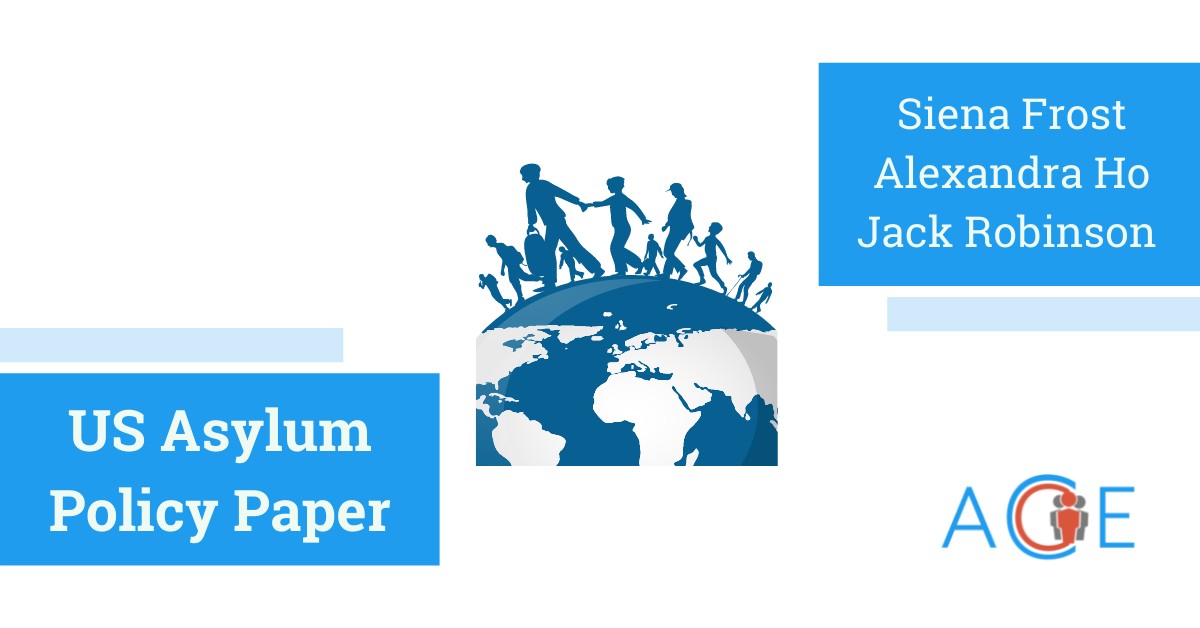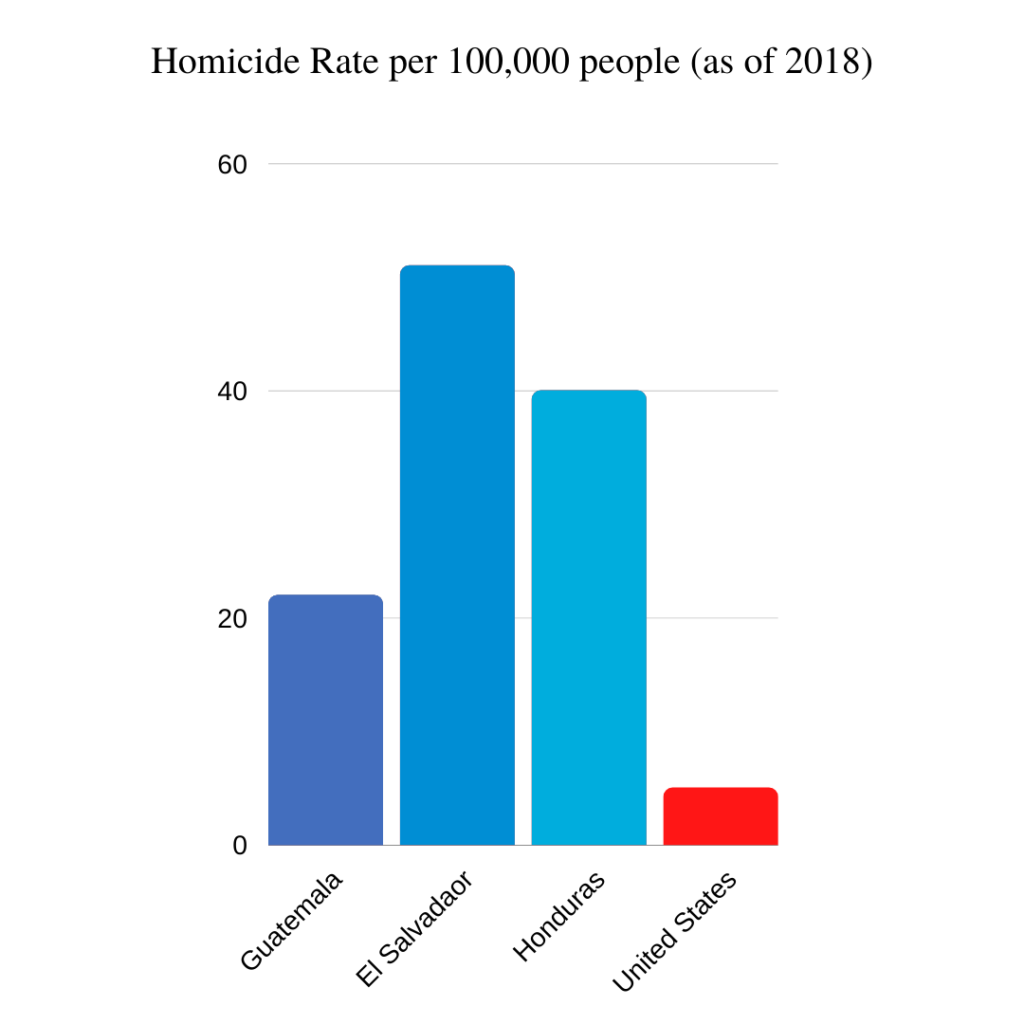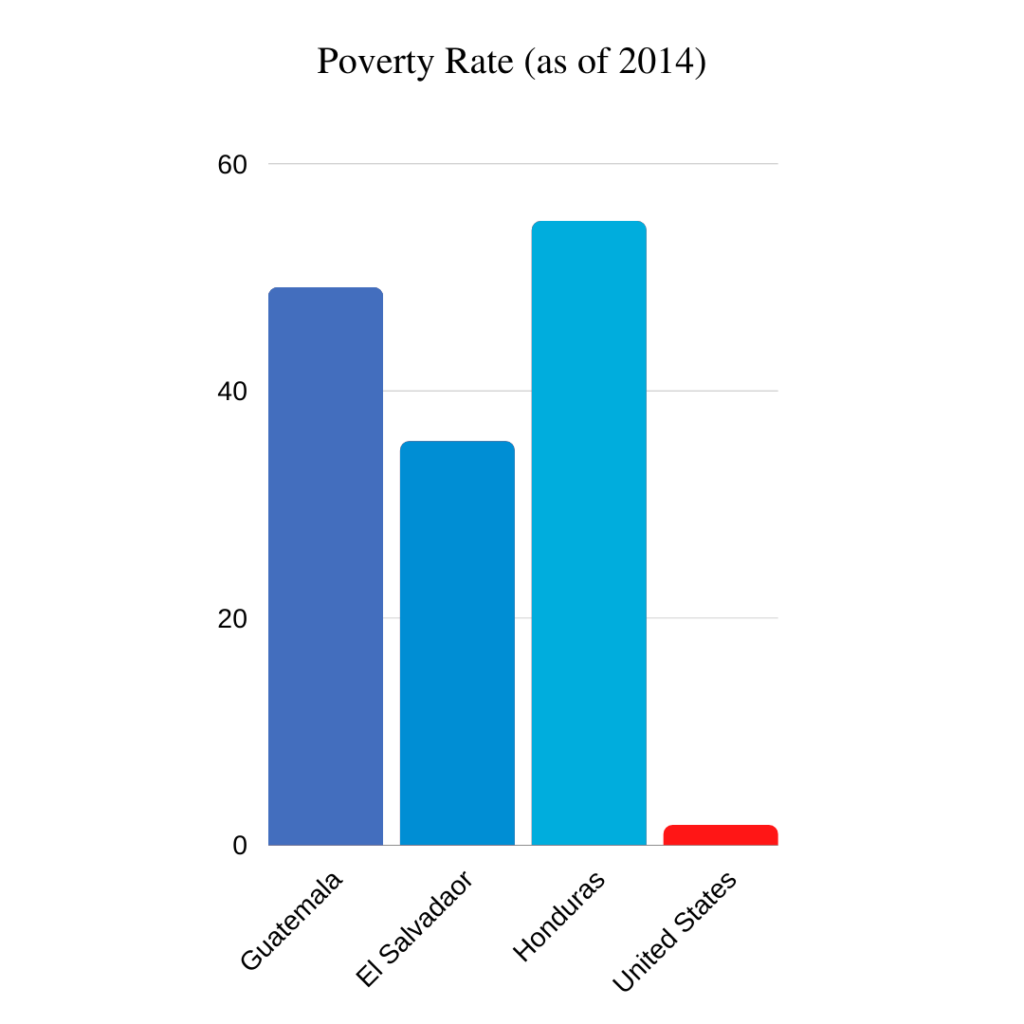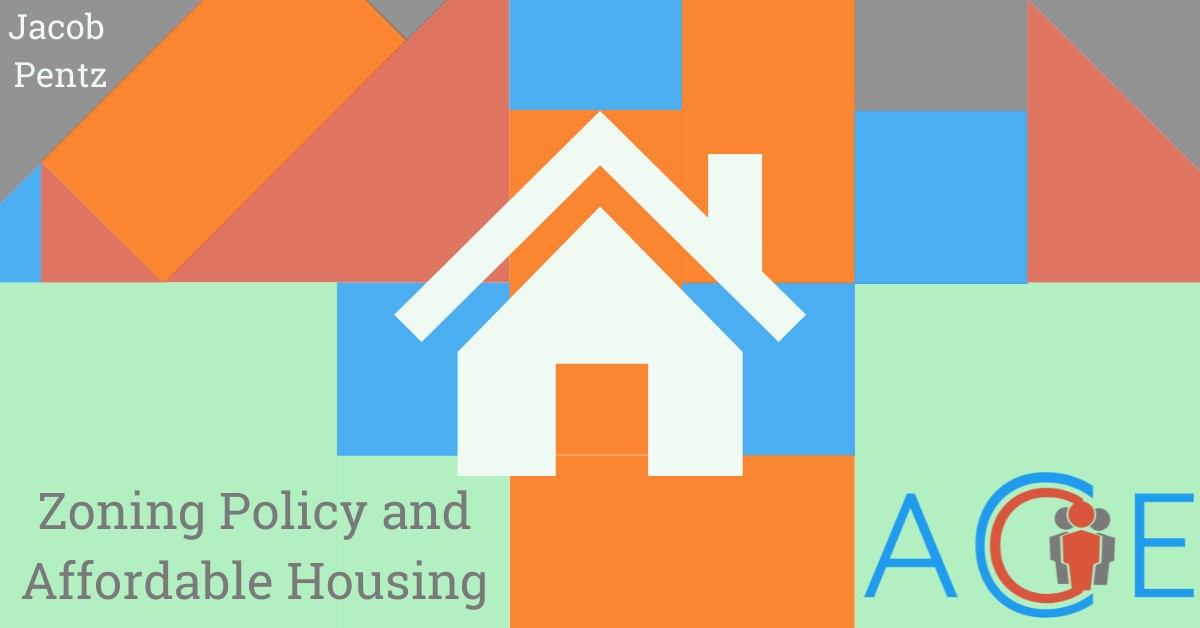Executive Summary
Vaccination mandates are state laws that require children to be immunized against certain diseases prior to attending childcare facilities and public educational institutions such as daycares, preschools, elementary schools, middle schools, and high schools. Vaccines are prophylactic biological preparations that train the immune system to recognize and destroy certain pathogens. They often contain attenuated versions of the pathogen, toxins that are produced from the pathogen, or surface proteins that are naturally present on the pathogen. When an individual successfully vaccinates against a disease, they become protected from that disease for an extended period of time. Should a person come into contact with a disease that they are vaccinated against, they’ll experience either no illness or a weaker version of the illness.
Vaccines protect not only those who are vaccinated, but also those who are in close proximity to them. If a high percentage of individuals are vaccinated in a community, herd immunity can protect those who are not able to vaccinate due to abnormal medical conditions. Diseases that children are required to vaccinate against are often highly contagious, and may have high morbidity and mortality rates. Widespread vaccination is one of the best strategies for preventing large scale outbreaks of preventable diseases, and this is achieved through the implementation of vaccination mandates. Every state has the authority to mandate vaccines through police powers, and each state requires a specific regimen of vaccines that it determines necessary to protect the health of the public. States can also choose whether or not to offer medical, religious, and philosophical exemptions to these vaccination mandates, and dictate what steps parents must go through to acquire exemptions. States that offer easily accessible exemptions tend to have greater rates of preventable diseases.
Since the late 1980’s, vaccination mandates have prevented hundreds of thousands of deaths, millions of hospitalizations, hundreds of millions of illnesses, and trillions of dollars in direct/social costs related to illnesses and hospitalizations. Given the extremely high cost/benefit value, the federal government purchases vaccine doses for preventable diseases and provides them to uninsured/underinsured children free of charge through the Vaccines for Children Program (VFC). However, vaccines are neither perfectly effective nor completely safe. Some people who are vaccinated will still contract the diseases they are protected against, and some people will experience serious injuries or even death from standard vaccinations. Since society mandates that children be vaccinated before entering daycares and public educational institutions, federal lawmakers established the National Vaccine Injury Compensation Program (VICP) through the National Childhood Vaccine Injury Act (NCVIA) to compensate families of children who were injured by mandated vaccinations. Instead of filing vaccine injury cases through the tort system, a specialized federal vaccine injury court handles all cases brought forth by plaintiffs. This court standardizes the litigation process for vaccine injuries to ensure that all plaintiffs have fair and equal trials.
Historical Overview
Vaccination mandates have existed for over three hundred years, with the earliest laws being implemented locally by boards of education, counties, and cities. The first state wide vaccination mandate was enacted in Massachusetts in 1855, requiring all students to be vaccinated against smallpox. Massachusetts had just passed a compulsory school attendance law which drastically increased the number of students receiving education, therefore increasing the risk of smallpox outbreaks. Smallpox is an infectious disease caused by the variola virus, with the more deadly strain variola major having a 30% mortality rate. In 1796, scientist and physician Edward Jenner devised a strategy to protect people from smallpox. Jenner had anecdotally observed that dairymaids were protected from smallpox, and later discovered that it was their exposure to the cowpox virus that protected them. Using cowpox virus inoculations, Jenner created the first vaccine. Despite the existence of a smallpox vaccine, many people were hesitant to use it or did not have access to the vaccine. It’s estimated that over 300 million people died from smallpox in the 20th century alone, well over 100 years after the vaccine’s existence.
The public health benefits of vaccination mandates became increasingly apparent over time, and can be clearly seen when comparing smallpox rates in states with mandates and states without mandates. Between 1919 – 1928, ten states with smallpox vaccination mandates had an average of 6.6 cases per 10,000 people, while six states delegating vaccination mandates to their own localities had 51.3 cases per 10,000 people, twenty-eight states with no vaccination mandate had 66.7 cases per 10,000 people, and four states that prohibited vaccination mandates had 115.2 cases per 10,000 people. In 1971, the CDC recommended discontinuation of the smallpox vaccine from the routine vaccination schedule due to the eradication of the disease in the United States.
The next vaccines were invented in the late nineteenth century, nearly 100 years after Jenner created the smallpox vaccine. The second vaccine to successfully prevent illness in humans was the live-attenuated rabies vaccine in 1885, followed by heat-inactivated typhoid and cholera vaccines in 1896. The smallpox and rabies vaccines produced immunity in the vaccinated individual by exposing them to an attenuated (weakened) version of the pathogen. The heat-inactivated typhoid and cholera vaccines functioned differently, resembling a more crude version of surface proteins and toxins vaccination. By killing the pathogens with heat, the vaccine would not be infectious, but it would still contain the surface proteins and toxins of the pathogen. Over time, scientists further refined these vaccines by producing specific surface proteins and toxins, then measuring them out in more precise concentrations for each vaccine dose. Throughout the early and mid twentieth century, scientists would successfully create many more vaccines, continuously improving their safety and efficacy. After observing the benefits of smallpox vaccination mandates, many states would go on to mandate other vaccines as well.
Introduction
Vaccination mandates in childcare and public educational institutions currently exist for the following 16 pathogens; Bordetella pertussis, Clostridium tetani, Corynebacterium diphtheriae, Haemophilus Influenzae, Hepatitis A, Hepatitis B, Human Papillomavirus, Influenza, Measles, Mumps, Neisseria meningitidis, Poliomyelitis, Rubella, Rotavirus, Streptococcus pneumoniae, and Varicella. To immunize children against all of these diseases, 13 different vaccines are used. Some of these vaccines immunize against multiple diseases. For instance, DTaP provides immunization against Diphtheria, Tetanus, and Pertussis. See Table 1. for the full list of vaccines and the diseases they protect against.
Depending on the ages where protection against a particular disease is most needed, a vaccine may only be required during a specific age range. H. influenzae is a bacterium that can cause severe illness in children under 5 years old, but over the age of 5 risk of serious illness falls dramatically. The Hib vaccine, which immunizes against this bacterium, is therefore only required in children entering daycares and Pre-K education. No states currently mandate that children in K-12 education receive the Hib vaccine, meaning if a child is entering kindergarten and didn’t attend daycare or Pre-K, then they were never legally required to have the vaccine. Booster vaccines are needed if immunity against a disease fades over time. Many vaccines require a series of shots over different periods of time, ranging one month apart (Hep B) to ten years in some cases (Tdap). See Table 2. for the Center for Disease Control’s (CDC) recommended vaccine immunization schedule from birth to 18 years old.
Vaccines included in state vaccination mandates are limited to any one of the thirteen that are listed in the CDC’s recommended immunization schedule for children aged 0-18. Every vaccine listed in the immunization schedule has received a biologics license from the FDA, which means that these vaccines have undergone extensive testing and analysis through clinical trials to ensure that they are both safe and effective. The CDC and state governments receive advice regarding appropriate timing, adequate dosing, and potential contraindications of vaccines from the Advisory Committee on Immunization Practices (ACIP). The ACIP is a panel of fifteen experts independent of the federal government who extensively analyze scientific literature on the topics of vaccines and preventable diseases to formulate vaccination policy recommendations for both adults and children.
Most of the diseases children are immunized against are highly contagious, and can transmit from person to person rapidly in close quarters. Public educational institutions and daycares are examples of such environments where the spread of diseases can occur rapidly, and this is exacerbated in low income areas where schools are often smaller and student to faculty ratios tend to be higher. Contagious diseases each have a value known as an R nought (R0), which represents the average number of people who will contract the disease from a single infected person. Measles normally has an (R0) of 12-18 in most outbreak environments, but in school environments the (R0) can be as high as 40. The best method to combat highly contagious diseases such as measles is through herd immunity. When 85-95% of individuals are vaccinated, transmission rates of that particular disease drop dramatically since a large percentage of people are immune. If 95% of the 12-40 people who’d have normally gotten infected from a measles carrier are vaccinated, then the chances of a full scale outbreak occurring are slim to none.
Although rare, due to abnormal medical conditions, some children are not able to be vaccinated. People with autoimmune diseases or cancer have suppressed immune systems, and they may not have the capacity to effectively develop immunity once vaccinated. Immunocompromised individuals are also at risk of experiencing more severe illness if infected with any of the vaccine preventable diseases. Another serious contraindication to vaccines is anaphylaxis, which occurs when the recipient of a vaccine is allergic to one of its ingredients. People with a history of allergic reactions to vaccines are often advised against vaccinating in the future, unless the ingredient they are allergic to has been identified. With immunocompromised individuals in mind, achieving optimum herd immunity can provide them with an extra barrier of protection against preventable diseases. In an environment with high immunization rates, an immunocompromised person would have to come into direct contact with someone infected to become sick, whereas in an environment with low immunization rates one infected person can spread the disease to other people and indirectly infect the immunocompromised patient. The former scenario is much less likely to occur in an educational setting, and it is generally considered safe for immunocompromised children to attend public schools with high immunization rates.
Current Policies and Challenges
The State and Federal Authority to Mandate Vaccinations
The authority to mandate vaccines arises from police powers that are granted to states under the tenth amendment of the Constitution. Police powers are defined in the Constitution as “the inherent authority of the state (and, through delegation, local government) to enact laws…to protect, preserve, and promote the health, safety, morals, and general welfare of the people. To achieve these communal benefits, the state retains the power to restrict, within federal and state constitutional limits, private interests, [i.e.] personal interests in autonomy, privacy, association, and liberty.” Police powers are exercised by the executive and legislative branches of states through the creation, implementation, and enforcement of laws. Given that several infectious diseases common to the United States are highly contagious and can spread rapidly at educational institutions, public health officials and lawmakers deemed that in order to protect the general welfare of the public, it was necessary to utilize police powers and require students to vaccinate prior to their attendance at public school.
Two constitutional challenges to vaccination mandates were heard by the United States Supreme Court, and in both cases the challenges were rejected after the court determined that states mandating vaccines are permissible exercises of police powers. These cases have since set the precedents to the legal standing of vaccination mandates. The first case, Jacobson v. Commonwealth of Massachusetts, upheld the 1905 state law requiring persons 21 years of age and older to vaccinate against smallpox. The court concluded that the vaccination mandate had a “real and substantial relation to the protection of the public health and safety.” In less than two decades, the Supreme Court heard its second challenge, Zucht v. King, in which plaintiffs argued that the exclusion of their child from school due to their unvaccinated status violated the Equal Protection and Due Process Clauses of the Fourteenth Amendment. The court largely referenced the Jacobson case when rejecting the challenge, concluding that the ordinance did not utilize any “arbitrary power, but only that broad discretion required for the protection of the public health.”
As addressed in the definition of police powers, states can only restrict powers within constitutional limits. In other words, states cannot restrict rights that are protected in the United States constitution. Opponents of vaccination mandates have argued, albeit controversially, that such mandates are violations of their first amendment right, particularly the right to freedom of religious expression. A well crafted version of this argument can be found in the Massachusetts Department of Public Health Memorandum, “the first clause, the Establishment Clause, forbids governments from passing laws that favor any particular religious preference, and the second clause, the Free Exercise Clause, permits individuals to practice their religion freely without interference from government entities. Parents who oppose immunization regulations have argued that requiring a student to submit to immunization that is inconsistent with his or her religious practices is counter to the Free Exercise Clause.” However, with the recent outbreaks in preventable diseases, many states have opted to remove the religious exemption option from their respective vaccination mandate legislation. This move has not been without legal challenges. In 2015, plaintiffs challenged the city of New York for excluding unvaccinated students with religious exemptions during a chickenpox outbreak. The plaintiffs made the following argument: “the statutory vaccination requirement, which is subject to medical and religious exemptions, violates their substantive due process rights, the Free Exercise Clause of the First Amendment, the Equal Protection Clause of the Fourteenth Amendment, the Ninth Amendment, and both state and municipal law. On the same grounds, plaintiffs argued that a state regulation permitting school officials to temporarily exclude from school students who are exempted from the vaccination requirement during an out-break of a vaccine-preventable disease is unconstitutional.” The court ultimately concluded that vaccination mandates are a permissible exercise of state police powers, and they do not infringe on an individual’s first amendment rights.
The federal government has some influence on vaccination mandates, primarily through the Commerce Clause and the Spending Clause of the United States Constitution. “The Commerce Clause grants Congress the power ‘to regulate Commerce with foreign Nations, and among the several States.’ This authority empowers Congress to regulate ‘three broad categories of activities’: (1) ‘channels of interstate commerce,’ like roads and canals; (2) ‘persons or things in interstate commerce,’ and (3) activities that substantially affect interstate commerce. The Spending Clause empowers Congress to tax and spend for the general welfare. Under this authority, Congress may offer federal funds to non-federal entities and prescribe the terms and conditions under which the funds are accepted and used by recipients.” Following the principles of federalism, the federal government can’t require states to pass mandatory vaccination laws. However, the federal government can utilize the Commerce Clause and the Spending Clause to incentivise states to implement vaccination mandates. Such incentives are often provided in the form of federal grants.
Vaccines for Children Program:
A series of measles outbreaks in the U.S. between 1989-1991 sparked a major vaccination campaign to increase immunization coverage. During that period of time there were 55,622 reported cases, approximately 11,000 hospitalizations, and 123 deaths from the outbreaks. The largest outbreaks occurred among minority children in large cities, and constituted up to 82% of cases. Black and Hispanic people represented 17% of the U.S. population at that time, but made up 46% of the confirmed measles cases and 66% of preschool cases in children under 5 years old. Before the large outbreaks, the immunization gap between White children and non-White children was 15%. Following the measles outbreaks, non-White children had a measles vaccination rate of 78% and White children had a vaccination rate of 84%, lowering the vaccination gap to 6%. One causal factor for this immunization gap was the simultaneously present gap in health insurance coverage. The percentage of uninsured White Americans in 1990 was 12%, while the percentage of uninsured Black and Hispanic people was 18% and 28% respectively. At this time, childhood immunizations often required the family to have health insurance, as not every state included childhood immunizations in their Medicaid plans.
To address the large-scale measles outbreaks and immunization gaps between white children and children of color, the Clinton Administration established the Vaccines for Children Program (VFC) in 1994, a vaccination campaign designed to dramatically increase childhood immunizations against vaccine preventable diseases. The goal was to vaccinate over 90% of children against each disease. VFC provided vaccines for children at no cost who were otherwise unable to acquire them, including Medicaid-eligible children, uninsured children, American Indian and Alaskan Native children, and under-insured children (children who have health insurance that doesn’t cover some/all vaccinations). It’s estimated that around 55% of all U.S. children under the age of 19 were eligible for VFC vaccines at the time of its implementation. VFC serves children in all U.S. states, as well as the Commonwealth of Puerto Rico, the U.S. Virgin Islands, American Samoa, Guam, and the Commonwealth of the Northern Mariana Islands. The vaccines covered by the VFC program are ones that protect against the 16 diseases that vaccination mandates address.
The VFC program along with all of the other state vaccination programs and mandates have led to substantial health outcome improvements in the United States. The CDC estimates that the children born in the VFC era (1994-2013) will experience over 322 million fewer illnesses, over 21 million fewer hospitalizations, and nearly 732 thousand fewer deaths from preventable diseases as a direct result of implementing childhood vaccination campaigns and mandates. These estimates do not include influenza (which is included in the VFC) or account for increases in the population, meaning these estimates are artificially low. The VFC program has also closed the immunization gap between white children and children of color over time. For example, the immunization gap was completely eliminated for MMR in 2005, Polio in 2006, and DTaP in 2011. Although the VFC program is expensive, it ends up leading to significant cost savings through preventing doctor visits and hospitalizations. The VFC program is estimated to cost $102 billion in direct costs and $121 billion in social costs, yet it averts an estimated $402 billion in direct costs and $1.5 trillion in social costs. This leads to a net savings of $295 billion in direct costs (hospitalization and treatment) and $1.38 trillion in societal costs (quarantines, loss of time at work, disabilities, etc).
National Childhood Vaccine Injury Act:
Throughout the 1980’s, vaccine hesitancy grew significantly following the publication of “DPT: Vaccine Roulette,” (WRC-TV 1982) a widely publicized television program that depicted children with serious brain injuries thought to be the result of the DPT vaccine. Four viewers of the television program founded Dissatisfied Parents Together, a 501(c)(3) nonprofit organization which has since been renamed the National Vaccine Information Center (NVIC). The NVIC has been long criticized as a leading source of fear mongering, promoting extensively disproven misinformation such as declaring that the MMR vaccine and autism have a causative relationship. Regarding the link between the DPT vaccine and brain damage, investigative journalist Brian Deer provides an excellent analysis in one of his publications, “Brain damage is a catch-all term, and there was nothing to distinguish injuries following vaccination from many of the 2000 causes of brain damage – including genetics, infections, birth problems, and traumas – that often reveal themselves at exactly the age at which DTP is given. In Britain, about 200 babies and infants develop such disorders every week, and by chance 6% will start within seven days of a jab.” Sudden infant death syndrome (SIDS) has also been historically linked with the DPT vaccine. SIDS almost exclusively occurs in infants between the ages of two weeks and one year, a time period in which infants are advised to receive three DPT shots as outlined in the CDC immunization schedule. In the United States, approximately 55 cases of SIDS will occur less than 24 hours after a DPT shot.
Both of the cases described above are based on correlative data, and such data does not prove a causative relationship between the two variables (in this case the vaccine and the suspected side effect). When media sources report on correlative vaccine data, their representation of it can often imply that a causative relationship exists. In the case of “DPT: Vaccine Roulette,” the causative relationship was declared. Extensive studies later demonstrated that the data described in those two cases were correlative and in essence coincidental. Researchers compared the incidences of SIDS between vaccinated and unvaccinated populations, and no relationship between the variables were found in multiple studies. Even though studies extensively disproved a causative link between the DPT vaccine and brain damage/SIDS, the damage had already been done. Trust in vaccines fell, and many parents outright refused to vaccinate their children. Media coverage of the numerous lawsuits against DPT vaccine manufacturers further eroded public trust. By 1987, more than 800 lawsuits were filed against manufacturers of the Pertussis vaccine, totaling more than $21 million. Due to litigation expenses associated with these lawsuits, the Pertussis vaccine rose from $0.17 to $11.00 per dose. One lawsuit settled in the tort system ended with the victim’s family being awarded $1.13 million, which equates to more than half the entire Pertussis vaccine market. The number of companies manufacturing the Pertussis vaccine dropped from 4 to 1, with the last company threatening to abandon production.
The increase in vaccine prices occurred during the Reagan administration, and without immediate action healthcare providers would run out of vaccines to administer to children. To address the rapidly depleting vaccine supply, president Ronald Reagan signed the National Childhood Vaccine Injury Act (NCVIA) into law. The NCVIA was passed to provide a federal no-fault system to compensate vaccine-related injuries and death, eliminating the liability for vaccine manufacturers. Another purpose of the NCVIA was to establish the National Vaccine Injury Compensation Program (VICP). The VICP awards compensation to the families of children who were injured by vaccines, and is funded by a 75 cent excise tax on each vaccine dose sold by manufacturers. The NCVIA led to the creation of a single federal vaccine court system that handles all routine vaccine related injury and death claims. This effectively standardized the vaccine litigation process, preventing personal injury lawyers from filing rampant lawsuits in courts not equipped to properly assess such cases. Similar to civil tort cases, individuals pursuing litigation are required to gather a preponderance of evidence to support their case. However, unlike civil tort cases which utilize expert testimony to support a case, the plaintiffs pursuing vaccine lawsuits must prove that the vaccine caused the injury in one of two methods.
The first method is to prove that the injury in question is one that’s listed in the Vaccine Injury Table, a table which lists potential contraindications that can occur after vaccination. Contraindications that are compensable are added to the Vaccine Injury Table through Department of Health and Human Services regulation in consultation with the Advisory Commission of Childhood Vaccines after extensive research proves the contraindication in question has a causative relationship with the vaccine. Vaccine injuries that are classified as “any idiopathic, unexplained, unknown, hypothetical, or undocumentable injury, illness or condition” are not eligible for compensation according to regulation. The injury in question must also have occurred within a specific time frame following vaccination, and lasted for a minimum of six months (except in the instance of death), or resulted in inpatient hospitalization, or required some form of surgical intervention. The government may counter the plaintiff’s claim if there is any reason to believe that the injury occurred independent of the vaccine. Cases where children develop infantile epilepsy or SIDS following DTP vaccination would be classified as injuries that occur independent of vaccination. See Table 3. the list of vaccines and their respective compensable injuries.
The second method of proving a causal relationship between the vaccine and the injury is pursued when the injury in question is not listed in the vaccine injury table. To prove that a vaccine caused an unlisted injury, the plaintiff must bear the burden of proof through the following three prong tests:
- the plaintiff must provide a biological theory of harm,
- the plaintiff must provide a logical sequence of events that connect the vaccine to the biological theory of harm in an appropriate time frame,
- the plaintiff must rule out any other biologically plausible alternatives to the vaccine(s) in question as causes for the biological theory of harm.
This method of proving causation has led to a case which ruled that the tetanus vaccine caused optic neuritis. Other rulings which utilized this method of proving causation have provided petitioners awards for claims that the MMR vaccine causes fibromyalgia, that the Hib vaccine causes transverse myelitis, and that the hepatitis B vaccine causes Guillain–Barré syndrome, chronic demyelinating polyneuropathy, and multiple sclerosis.
The rationale for the NCVIA and the VICP is to societally compensate for the unavoidable injuries that occur when society mandates that children get vaccinated to attend public schools. Compensation for vaccine injuries are awarded in a lump sum payment and an annuity, ensuring that the plaintiff is compensated for medical costs, estimated lost wages, and pain and suffering. Reasonable legal fees are covered for all plaintiffs who file an injury claim in good faith regardless of the success of their claim. Compensation for death claims are awarded in a lump sum capped at $250,000. Vaccines that are covered in the VICP only include the childhood routine vaccinations for the 16 preventable diseases recommended by the Advisory Committee on Immunization Practices (ACIP). However, a variety of combination vaccines that target the 16 preventable diseases have been in use since 2006, with some still in current use such as the Hep A-Hep B vaccine and others discontinued such as the Hep B-Hib vaccine. Due to the large variety of combination vaccines, more than just the 13 vaccines outlined in the CDC immunization schedule are listed in the VICP’s monthly injury report. See Table 4. for data on the total number doses administered between 2006-2019, the total number of injury and death petitions filed, the total number of petitions awarded, and the total number of petitions dismissed.
Variations in State Vaccination Mandates
By the late 20th century, vaccination mandates for children attending public schools existed in every state and DC. The legality of private schools being exempt from their respective state’s vaccination mandate depends on the particular state. Depending on the state’s statutory scheme, one of the following three scenarios is possible:
- private schools and religious schools are exempt,
- only religious schools are exempt,
- neither private nor religious schools are exempt.
Although some private schools are not required to abide by their state’s vaccination mandates, many still choose to require the same (if not more) vaccinations for their respective students due to the immense public health benefits of herd immunity. Each state decides which vaccines are required, and that number often varies from state to state. Alabama, California, and South Dakota require the least number of vaccines at 7, while Rhode Island requires the most vaccines totaling 13. The average number of required vaccinations among the 50 states and DC is 9, although the exact vaccines that are required vary. Six vaccines are required in every state, and include DTaP (diphtheria, tetanus, and pertussis), Hib, MMR (measles, mumps, and rubella), Polio, Tdap (diphtheria, tetanus, and pertussis booster), and Varicella (chicken pox). Vaccines that are required in half or more states include, Hepatitis A, Hepatitis B, Men ACWY (meningitis), and PCV (pneumococcal virus). Vaccines required in only a few states include HPV (human papillomavirus), Influenza, and Rotavirus. Even if one of the 13 vaccines is not a state requirement where a particular child is located, that child is still eligible to acquire that vaccine free of charge due to the VFC.
Three types of vaccination exemptions are available to students depending on which state they live in.
- All fifty states and DC have medical exemptions, which exempt students from vaccinating who have medical conditions that could result in serious contraindications. Such medical conditions include but are not limited to autoimmune conditions, cancer, and allergies to one or more of the vaccine’s ingredients. To acquire a medical exemption, the child must have the application signed off by a physician or other qualified medical authority who deems that the risks of vaccination outweigh the benefits.
- Another exemption for vaccinations can be made on religious grounds. If receiving a vaccination goes against a child or their family’s religious beliefs, the family can apply for a religious exemption that waives the vaccination requirements. A religious exemption applies universally to all vaccines, meaning parents can’t use it to exempt their child from receiving certain required vaccines while accepting others. The barriers to acquiring a religious exemption vary from state to state. Some states grant religious exemptions after a few documents are filled out, while other states require proof of membership in a recognized religious organization. As of 2021, 43 states permit religious exemptions.
- The last type of exemption offered, albeit less common, is on philosophical grounds. In these states, a parent can avoid vaccinating their children if it goes against their philosophical or personal beliefs. As of May 2021, 18 states permit philosophical exemptions. See Table 5. To identify which vaccines are mandated in each state, and what exemptions are permitted as of May 2021.
By 2000, many preventable diseases had dramatically decreased compared to the years prior to their respective vaccines being licensed. Measles, for example, had 503,282 annual cases on average prior to the existence of its vaccine. In 2000, the number of cases was 81, a 99.98% decrease. Due to vaccination campaigns, wild poliovirus and smallpox have been effectively eradicated in the United States with zero cases occurring during the year 2000. To achieve those decreases in preventable disease rates, many public health interventions were executed across the 50 states and DC. Vaccination mandates for students in public educational institutions played a large role in these decreases in preventable disease rates, as well as federal government action in the form of the Vaccines for Children Program. The vaccination rates of children aged 19 months to 35 months for most diseases during the year 2000 were over 90%, falling short for Polio, Tetanus, and Varicella. With vaccination rates so high and the preventable disease burdens so low, strict enforcement of mandates soon started to fall. The threat that many of these preventable diseases once posed was no longer the same at present day, and the individual risk associated with not vaccinating dropped precipitously. See Table 6. for data on the average rate of preventable diseases three years before vaccine licensure compared to the year 2000. See Table 7. for data on vaccination rates of children aged 19-35 months in the United States during the year 2000.
Even after states had implemented vaccination mandates, a gradual lack of enforcement for non-compliance eventually led to a rise in unvaccinated students significant enough to impact herd immunity. Under state vaccination laws, children who don’t meet the minimum vaccination requirements are to be excluded from attending school. However, enforcement of vaccination mandates varies from state to state. In the 1975/1976 school year, six states implemented stricter enforcement of their vaccination mandates, prohibiting students from entering who weren’t vaccinated and suspending students who did not keep up to date with the required immunization schedule. During the 1977/1978 school year, the six states that had implemented stricter enforcement measures had less than half the rate of measles compared to the rest of the country. The following year (1978/1979) the six states had less than one tenth the rate of measles compared to the rest of the country. Measles outbreaks in Alaska and Los Angeles in 1976 and 1977 respectively led to public health officials strictly enforcing the vaccination requirements. In Alaska, 7418 of 89,109 students (8.3%) were excluded from school due to not meeting vaccination requirements. In Los Angeles, 50,000 of 1,400,000 students (4%) were excluded from school. Within a couple weeks, nearly all of the excluded students were up to date on their vaccinations and back in school. These instances demonstrate that strict enforcement of vaccination mandates are effective, and potentially necessary in some states to meet vaccination coverage goals.
In recent years, social media has propagated vaccine skepticism across the country, leading to a rise in the percentage of children with non-medical vaccine exemptions. The average percentage of kindergarteners with non-medical vaccine exemptions in the 2011/2012 school year was 1.2%. In the 2018/2019 school year, the average percentage of children with vaccine exemptions was 2.2%, with the highest states non-medically exempting 7.7% of children. States that permit philosophical exemptions tend to have a higher percentage of non-medical exempted students. At first glance, these averages may not seem alarming. If 2.2% of children have non medical exemptions, then around 98% of children should still be vaccinated. However, this is not the case. In addition to a rise in non-medical exemptions, states have also recently lapsed in enforcing mandates to non-exempt unvaccinated students. In the 2018/2019 school year, while the average percentage of kindergarteners with exemptions (including medical) was 2.5%, the average number of unvaccinated kindergartners without any exemptions was 2.8%.
When combined, the number of unvaccinated students with and without exemptions has pushed some states below the coverage percentage necessary for herd immunity. This has led to a resurgence in outbreaks of preventable diseases that were once nearly eradicated in the United States. In 2018, 375 cases of measles were confirmed in the United States, usually isolated to small orthodox religious communities. However, in 2019 there were 1,282 cases. This jump in cases was caused by two major outbreaks, the 2019 Pacific Northwest measles outbreak and the 2019 New York measles outbreaks, with both causing their respective states to declare public health state of emergencies. The Pacific Northwest measles outbreak spread throughout the Portland Metropolitan area, with the majority of cases occurring in the Clark County, Washington suburbs. Clark County was known to have widespread anti-vaccination sentiment, and the measles vaccination percentage at the time of the outbreak was just 78%, far below the necessary coverage for herd immunity. By the end of the outbreak, 72 people had been infected. The 2019 New York measles outbreak occurred in New York City and the neighboring Rockland County. The Rockland County suburbs had measles vaccination rates of only 71%, and neighborhoods in Brooklyn with large populations of Orthodox Jews were heavily affected due to low vaccination rates. As a result of the outbreak, the public health officials in Rockland County barred all unvaccinated children from entering school. In response, 42 parents sued the Rockland County health department in an attempt to overturn the order, but ultimately failed when a judge refused to do so. By the end of the outbreak, a total of 649 cases had occurred.
With the recent rise in measles cases, many states have begun removing religious and philosophical exemptions. Following the Disneyland measles outbreak of 147 cases in late 2014, California removed both religious and philosophical exemptions to required vaccines. New York later removed religious and philosophical exemptions following the outbreak in 2019. Other states that have removed non-medical exemptions include Maine in 2019, and Connecticut in 2021. If the number of vaccine exemptions continue to rise, more states will likely remove these exemptions as well. The policy rational states have used for their decisions to remove exemptions stem from the rise in unvaccinated populations, and the costly societal and medical expenses associated with outbreaks. The Washington Department of Health disclosed that over a million dollars was spent to contain the 2019 outbreak. Since the outbreak was a preventable occurrence, significant public outrage followed. See Figure 1 for comparison of what exemptions each state offered in 2014 vs 2021.
Figure 1. Vaccine Exemptions Offered by State 2014 vs 2021
Vaccination Mandates Beyond Public Educational Institutions
Students at public educational institutions are not the only group of people who are required to vaccinate against preventable diseases. Other notable groups who also have to comply with mandated vaccine regimens include healthcare workers, immigrants and refugees, and military personnel. This section will discuss who exactly falls into these groups, which vaccines are required, a brief description of the rationale behind imposing these mandates, and which governing body creates and enforces these mandates.
Healthcare workers who have to vaccinate include physicians, nurses, emergency medical personnel, dental professionals and students, medical and nursing students, laboratory technicians, pharmacists, hospital volunteers, and administrative staff. The CDC recommends that healthcare workers receive the following vaccinations: Hepatitis B, Influenza, Meningococcal, MMR, Tdap, and Varicella. The policy rationale behind requiring healthcare workers to vaccinate is to protect both the workers themselves and their patients. Vaccination mandates for healthcare workers are regulated and enforced by state governments.
Immigrants and refugees who seek residence in the United States are required to show proof of vaccinations before entering. All immigrants and refugees are required to be vaccinated against the following diseases: Diphtheria, Hepatitis A, Hepatitis B, Hib, Influenza, Measles, Meningococcal disease, Mumps, Pertussis, Pneumococcal disease, Polio, Rotavirus, Rubella, Tetanus, and Varicella. The Advisory Committee on Immunization Practices (ACIP), a panel of 15 experts independent of the federal government, provides recommendations to the Centers for Disease Control (CDC) and the Department of Health and Human Services (HHS) regarding which vaccinations should be required for immigrants and refugees. The CDC and HHS ultimately regulate and enforce which vaccinations are required for immigrants and refugees.
Military personnel are required to be compliant with the CDC immunization schedule, and may require vaccinations against other diseases if they are deployed in certain geographic locations. Other diseases that military personnel have to frequently vaccinate against include the following: Malaria, Rabies, Typhoid Fever, and Yellow Fever. Vaccination mandates for military personnel are regulated and enforced by the Department of Defence (DOD). Further, in certain circumstances threats of biological terrorism and warfare may necessitate certain military personell to vaccinate against diseases that are likely to be utilized as biological weapons. The FDA has approved vaccines and antitoxins for the following diseases likely to be utilized as biological weapons: anthrax, botulinum toxin, bubonic/pneumonic plague, and smallpox. Should a novel disease pose a threat to military members, The DOD can seek emergency use authorizations from the FDA to utilize unproven but potentially life saving drugs (including vaccines) to protect military personnel.
Final Reflections: Balancing the Risks and Benefits of Vaccines
Vaccines are neither perfectly safe nor perfectly effective. Inevitably, some people will have adverse reactions to vaccines, and some people will not be adequately protected. From the inception of the VICP in 1988 to July 2021, 24,200 claims of either injury or death were submitted, and 8,162 (approximately 34%) of those claims ended with compensation for the plaintiffs. Different vaccines range in their efficacy, for example the MMR vaccine is 93% effective at one dose and 97% effective at two doses. Despite rare instances of adverse reactions and lack of efficacy, routine childhood vaccines will offer adequate protection and an overall decrease in morbidity and mortality for the vast majority of children who receive them. Over time, all 50 states observed the overwhelming reduction of disease burdens from the implementation of vaccination mandates and followed suit.
One factor that complicates public approval and trust in vaccination mandates is the changes in calculated risk overtime after the implementation of a vaccination mandate. Once a vaccination mandate achieves the adequate percentages for herd immunity, the risk of contracting that disease drops precipitously. Prior to the implementation of the vaccination mandate, the risk of contracting the disease was likely high, therefore the benefits of vaccinating were more obvious. However, once herd immunity is achieved, the risk of contracting the disease lowers, and the risk of adverse reactions to the vaccine are weighed more heavily in the decision making process. This phenomena was apparent in the year 2000 when the United States had the lowest recorded rate of vaccine-preventable diseases in history. During that same year, the United States also had the largest immunization coverage among its domestic population. The preventable disease burden was so low that reports of adverse vaccine reactions appeared in news media more frequently than cases of preventable diseases.
When a disease is nearly eradicated, serious consideration needs to be given on continuing administration of the vaccine if it causes any rare but severe adverse reactions. A good example of this dilemma was deciding whether to administer the oral polio vaccine (OPV) or the inactive polio vaccine (IPV). The OPV offers the strongest protection against polio, and best prevents transmission overall. However, the OPV can cause paralysis. This adverse reaction is rare, occurring at a rate of around 1 in 2.4 million vaccinations. The risk of paralysis from wild poliovirus was much greater prior to the implementation of the vaccine, but over time cases of wild poliovirus dropped. The last instance of paralysis from wild poliovirus occurred in 1979. Every case of paralysis associated with the polio after 1979 occurred as a result of the vaccine. Although eradicated in the western hemisphere, poliovirus still exists in other regions of the world and can easily be reintroduced through international travel if herd immunity is not maintained. The IPV provides immunity against wild poliovirus without the risk of paralysis, albeit not as effectively. In 2000, the United States switched to a vaccine regimen that only utilized IPV due to the risks of OPV outweighing its benefits.
Appendix
Table 1. Vaccines Mandated at Childcare and Public Educational Institutions
| Vaccine | Diseases | Type of Disease |
| DTaP | Diphtheria, Tetanus and Pertussis | Bacterial |
| HepA | Hepatitis A | Viral |
| HepB | Hepatitis B | Viral |
| Hib | Haemophilus Influenzae type B | Bacterial |
| HPV | Human Papillomavirus | Viral |
| Influenza | Seasonal Influenza | Viral |
| MMR | Measles, Mumps, and Rubella | Viral |
| Men ACWY | Meningitis serogroups A, C, W, and Y | Bacterial |
| PCV | Streptococcus pneumoniae | Bacterial |
| Polio | Poliomyelitis | Viral |
| Rotavirus | Rotavirus | Viral |
| Tdap | Diphtheria, Tetanus and Pertussis booster | Bacterial |
| Varicella | Chickenpox | Viral |
Table 2. CDC Immunization Schedule
| Vaccinations | Number of Doses | Timeline of Doses by Age |
| DTaP | 5 | Month 2, Month 4, Month 6, Months 15-18, Years 4-6 |
| HepA | 2 | Month 12, Month 18 |
| HepB | 3 | Birth, Months 1-2, Months 12-18 |
| Hib | 4 | Month 2, Month 4, Month 6, Months 12-15 |
| HPV | 2 | Year 9, 5 Months After 1st Dose |
| Influenza | Annual 1 or 2 | Month 6 |
| MMR | 2 | Months 12-15, Years 4-6 |
| Men ACWY | 2 | Years 11-12, Year 16 |
| PCV | 4 | Month 2, Month 4, Month 6, Months 12-15 |
| Polio | 4 | Month 2, Month 4, Months 6-18, Years 4-6 |
| Rotavirus | 3 | Month 2, Month 4, Month 6 |
| Tdap | 1 | 11-12 years |
| Varicella | 2 | Months 12-15, Years 4-6 |
Table 3. Vaccine Injury Table
| Vaccine | Illness, disability, injury or condition covered | Time period for first symptom or manifestation of onset or of significant aggravation after vaccine administration |
| I. Vaccines containing tetanus toxoid | A. Anaphylaxis | ≤4 hours. |
| B. Brachial Neuritis | 2-28 days | |
| C. Shoulder Injury Related to Vaccine Administration | ≤48 hours. | |
| D. Vasovagal syncope | ≤1 hour. | |
| II. Vaccines containing whole cell pertussis bacteria, extracted or partial cell pertussis bacteria, or specific pertussis antigen(s) | A. Anaphylaxis | ≤4 hours. |
| B. Encephalopathy or encephalitis | ≤72 hours. | |
| C. Shoulder Injury Related to Vaccine Administration | ≤48 hours. | |
| D. Vasovagal syncope | ≤1 hour | |
| III. Vaccines containing measles, mumps, and rubella virus or any of its components | A. Anaphylaxis | ≤4 hours |
| B. Encephalopathy or encephalitis | 5-15 days | |
| C. Shoulder Injury Related to Vaccine Administration | ≤48 hours. | |
| D. Vasovagal syncope | ≤1 hour. | |
| IV. Vaccines containing rubella virus | A. Chronic arthritis | 7-42 days |
| V. Vaccines containing measles virus | A. Thrombocytopenic purpura | 7-30 days |
| B. Vaccine-Strain Measles Viral Disease in an immunodeficient recipient | ||
| —Vaccine-strain virus identified | Not applicable. | |
| —If strain determination is not done or if laboratory testing is inconclusive | ≤12 months. | |
| VI. Vaccines containing polio live virus | A. Paralytic Polio | |
| —in a non-immunodeficient recipient | ≤30 days. | |
| —in an immunodeficient recipient | ≤6 months. | |
| —in a vaccine associated community case | Not applicable. | |
| B. Vaccine-Strain Polio Viral Infection | ||
| —in a non-immunodeficient recipient | ≤30 days. | |
| —in an immunodeficient recipient | ≤6 months. | |
| —in a vaccine associated community case | Not applicable. | |
| VII. Vaccines containing polio inactivated virus | A. Anaphylaxis | ≤4 hours. |
| B. Shoulder Injury Related to Vaccine Administration | ≤48 hours. | |
| C. Vasovagal syncope | ≤1 hour | |
| VIII. Hepatitis B vaccines | A. Anaphylaxis | ≤4 hours. |
| B. Shoulder Injury Related to Vaccine Administration | ≤48 hours. | |
| C. Vasovagal syncope | ≤1 hour. | |
| IX. Haemophilus influenzae type b (Hib) vaccines | A. Shoulder Injury Related to Vaccine Administration | ≤48 hours. |
| B. Vasovagal syncope | ≤1 hour. | |
| X. Varicella vaccines | A. Anaphylaxis | ≤4 hours. |
| B. Disseminated varicella vaccine-strain viral disease | ||
| Vaccine-strain virus identified | Not applicable. | |
| —If strain determination is not done or if laboratory testing is inconclusive | 7-42 days (not less than 7 days and not more than 42 days). | |
| C. Varicella vaccine-strain viral reactivation | Not applicable. | |
| D. Shoulder Injury Related to Vaccine Administration | ≤48 hours. | |
| E. Vasovagal syncope | ≤1 hour. | |
| XI. Rotavirus vaccines | A. Intussusception | 1-21 days |
| XII. Pneumococcal conjugate vaccines | A. Shoulder Injury Related to Vaccine Administration | ≤48 hours. |
| B. Vasovagal syncope | ≤1 hour. | |
| XIII. Hepatitis A vaccines | A. Shoulder Injury Related to Vaccine Administration | ≤48 hours. |
| B. Vasovagal syncope | ≤1 hour. | |
| XIV. Seasonal influenza vaccines | A. Anaphylaxis | ≤4 hours. |
| B. Shoulder Injury Related to Vaccine Administration | ≤48 hours. | |
| C. Vasovagal syncope | ≤1 hour. | |
| D. Guillain-Barré Syndrome | 3-42 days | |
| XV. Meningococcal vaccines | A. Anaphylaxis | ≤4 hours |
| B. Shoulder Injury Related to Vaccine Administration | ≤48 hours. | |
| C. Vasovagal syncope | ≤1 hour. | |
| XVI. Human papillomavirus (HPV) vaccines | A. Anaphylaxis | ≤4 hours. |
| B. Shoulder Injury Related to Vaccine Administration | ≤48 hours. | |
| C. Vasovagal syncope | ≤1 hour. | |
| XVII. Any new vaccine recommended by the Centers for Disease Control and Prevention for routine administration to children, after publication by the Secretary of a notice of coverage | A. Shoulder Injury Related to Vaccine Administration | ≤48 hours. |
| B. Vasovagal syncope | ≤1hour |
Table 4. National Vaccine Injury Compensation Program Data
| Vaccine | Total Doses Distributed 2006-2019 | Total Injury/Death Petitions Filed | Total Petitions Awarded | Total Petitions Dismissed |
| DTaP | 109,991,074 | 292 | 163 | 129 |
| DTaP-Hep B-IPV | 79,798,141 | 106 | 43 | 63 |
| DTaP-Hib | 1,135,474 | 5 | 3 | 2 |
| DTaP-IPV | 31,439,498 | 9 | 5 | 4 |
| DTaP-IPV-Hib | 74,403,716 | 56 | 16 | 40 |
| Hep A-Hep B | 17,946,038 | 30 | 22 | 8 |
| Hep B-Hib | 4,787,457 | 5 | 4 | 1 |
| Hep A | 203,339,060 | 95 | 59 | 36 |
| Hep B | 216,772,259 | 189 | 96 | 93 |
| Hib | 137,675,315 | 24 | 14 | 10 |
| HPV | 132,062,306 | 371 | 146 | 225 |
| Influenza | 1,842,400,000 | 5000 | 4260 | 740 |
| Inactivated Poliovirus (IPV) | 78,237,532 | 10 | 5 | 5 |
| Meningococcal | 119,054,485 | 77 | 57 | 20 |
| MMR | 116,647,585 | 266 | 132 | 134 |
| MMR-Varicella | 32,226,723 | 45 | 26 | 19 |
| PCV | 269,907,936 | 158 | 98 | 60 |
| Rotavirus | 125,787,826 | 67 | 48 | 19 |
| Td | 71,408,785 | 112 | 84 | 28 |
| Tdap | 294,534,882 | 643 | 531 | 112 |
| Tetanus | 3,836,052 | 85 | 64 | 21 |
| Varicella | 127,901,171 | 73 | 48 | 25 |
Table 5. Vaccination Mandates Required and Exemptions Permitted in Each State
| State | Vaccines Required | Exemptions Permitted |
| Alabama | DTaP, Hib, MMR, PCV, Polio, Tdap, and Varicella | Medical and Religious |
| Alaska | DTaP, Hep A, Hep B, Hib, MMR, Polio, Tdap, and Varicella | Medical and Religious |
| Arizona | DTaP, Hep A, Hep B, Hib, MenACWY, MMR, PCV, Polio, Tdap, and Varicella | Medical, Religious, and Philosophical (school enrollees only) |
| Arkansas | DTaP, Hep B, Hib, MenACWY, MMR, PCV, Polio, Tdap, and Varicella | Medical, Religious, and Philosophical |
| California | DTaP, Hep B, Hib, MMR, Polio, Tdap, and Varicella | Medical |
| Colorado | DTaP, Hep B, Hib, MMR, PCV, Polio, Tdap, and Varicella | Medical, Religious, and Philosophical |
| Connecticut | DTaP, Hep A, Hep B, Hib, Influenza, MenACWY, MMR, PCV, Polio, Tdap, and Varicella | Medical |
| Delaware | DTaP, Hep B, Hib, MenACWY, MMR, Polio, Tdap, and Varicella | Medical and Religious |
| District of Columbia | DTaP, Hep A, Hep B, Hib, HPV, MenACWY, MMR, PCV, Polio, Tdap, and Varicella | Medical and Religious |
| Florida | DTaP, Hep B, Hib, MMR, PCV, Polio, Tdap, Varicella | Medical and Religious |
| Georgia | DTaP, Hep A, Hep B, Hib, MenACWY, MMR, PCV, Polio, Tdap, and Varicella | Medical and Religious |
| Hawaii | DTaP, Hep B, Hib, HPV, MenACWY, MMR, PCV, Polio, Tdap, Varicella | Medical and Religious |
| Idaho | DTaP, Hep A, Hep B, Hib, MenACWY, MMR, PCV, Polio, Rotavirus, Tdap, and Varicella | Medical, Religious, and Philosophical |
| Illinois | DTaP, Hep B, Hib, MenACWY, MMR, PCV, Polio, Tdap, and Varicella | Medical and Religious |
| Indiana | DTaP, Hep A, Hep B, Hib, MenACWY, MMR, PCV, Polio, Tdap, and Varicella | Medical and Religious |
| Iowa | DTaP, Hep B, Hib, MMR, MenACWY, MMR, PCV, Polio, Tdap, and Varicella | Medical and Religious |
| Kansas | DTaP, Hep A, Hep B, Hib, MMR, MenACWY, PCV, Polio, Tdap, and Varicella | Medical and Religious |
| Kentucky | DTaP, HIB, Hep A, Hep B, MMR, MenACWY, PCV, Polio, Tdap, and Varicella | Medical and Religious |
| Louisiana | DTaP, HIB, Hep B, MenACWY, MMR, Polio, Rotavirus, Tdap, and Varicella | Medical and Philosophical |
| Maine | DTaP, Hep B, Hib, MenACWY, MMR, PCV, Polio, Tdap, and Varicella | Medical |
| Maryland | DTaP, Hep B, Hib, MenACWY, MMR, PCV, Polio, Tdap, and Varicella | Medical and Religious |
| Massachusetts | DTaP, Hep B, Hib, Influenza, MenACWY, MMR, Polio, Tdap, and Varicella | Medical and Religious |
| Michigan | DTaP, Hep B, Hib, MenACWY, MMR, PCV, Polio, Tdap, and Varicella | Medical, Religious, and Philosophical |
| Minnesota | DTaP, Hep A,Hep B, Hib, MenACWY, MMR, PCV, Polio, Tdap, and Varicella | Religious and Philosophical |
| Mississippi | DTaP, Hep B, Hib, MMR, PCV, Polio, Tdap, Varicella | Medical |
| Missouri | DTaP, Hep B, Hib, MenACWY, MMR, PCV, Polio, Tdap, Varicella | Medical, Religious, and Philosophical (Childcare Only) |
| Montana | DTaP, Hep B, Hib, MMR, PCV, Polio, Tdap, and Varicella | Medical and Religious |
| Nebraska | DTaP, Hep B, Hib, MMR, PCV, Polio, Tdap, and Varicella | Medical and Religious |
| Nevada | DTaP, Hep A, Hep B, Hib, MenACWY, MMR, PCV, Polio, Tdap, and Varicella | Medical and Religious |
| Newhampshire | DTaP, Hep B, Hib, MMR, Polio, Tdap, and Varicella | Medical and Religious |
| New Jersey | DTaP, Hep B, Hib, Influenza, MenACWY, MMR, PCV, Polio, Tdap, and Varicella | Medical and Religious |
| New Mexico | DTaP, Hep A, Hep B, Hib, MenACWY, MMR, PCV, Polio, Tdap, and Varicella | Medical and Religious |
| New York | DTaP, Hep B, Hib, MenACWY, MMR, PCV, Polio, Tdap, and Varicella | Medical |
| North Carolina | DTaP, Hep B, Hib, MenACWY, MMR, PCV, Polio, Tdap, and Varicella | Medical and Religious |
| North Dakota | DTaP, Hep A, Hep B, Hib, MenACWY, MMR, PCV, Polio, Rotavirus, Tdap, and Varicella | Medical, Religious, and Philosophical |
| Ohio | DTaP, Hep A,Hep B, Hib, Influenza, MenACWY, MMR, PCV, Polio, Rotavirus, Tdap, and Varicella | Medical, Religious, and Philosophical |
| Oklahoma | DTaP, Hep A, Hep B, Hib, MMR, PCV, Polio, Tdap, and Varicella | Medical, Religious, and Philosophical |
| Oregon | DTaP, Hep A, Hep B, Hib, MMR, Polio, Tdap, and Varicella | Medical, Religious, and Philosophical |
| Pennsylvania | DTaP, Hep A, Hep B, Hib, Influenza, MenACWY, MMR, PCV, Polio, Rotavirus, Tdap, and Varicella | Medical, Religious, and Philosophical |
| Rhode Island | DTaP, Hep A, Hep B, Hib, HPV, Influenza, MenACWY, MMR, PCV, Polio, Rotavirus, Tdap, and Varicella | Medical and Religious |
| South Carolina | DTaP, Hep A, Hep B, Hib, MMR, PCV, Polio Tdap, and Varicella | Medical and Religious |
| South Dakota | DTaP, Hib, MenACWY, MMR, Polio, Tdap, and Varicella | Medical and Religious |
| Tennessee | DTaP, Hep A, Hep B, Hib, MMR, PCV, Polio, Tdap, and Varicella | Medical and Religious |
| Texas | DTaP, Hep A, Hep B, Hib, MenACWY, MMR, PCV, Polio, Tdap, and Varicella | Medical, Religious, and Philosophical |
| Utah | DTaP, Hep A, Hep B, Hib, MenACWY, MMR, PCV, Polio, Tdap, and Varicella | Medical, Religious, and Philosophical |
| Vermont | DTaP Hep B, Hib, MenACWY, MMR, PCV, Polio, Tdap, and Varicella | Medical and Religious |
| Virginia | DTapP HPV, Hep B, Hib, MMR, PCV, Polio, Tdap, and Varicella | Medical, Religious, and Philosophical (HPV Only) |
| Washington | DTaP, Hep B, Hib, MMR, PCV, Polio, Tdap, and Varicella | Medical, Religious, and Philosophical (Except MMR) |
| West Virginia | DTaP, Hep B, Hib, MenACWY, MMR, PCV, Polio, Rotavirus, Tdap, and Varicella | Medical |
| Wisconsin | DTaP, Hep B, Hib, MMR, PCV, Polio, Tdap, and Varicella | Medical, Religious, and Philosophical |
| Wyoming | DTaP, Hep B, Hib, MMR, PCV, Polio, Tdap, and Varicella | Medical and Religious |
| Disease | Annual Average 3 Years Pre-Vaccine | Cases in 2000 | Percent Decrease |
| Smallpox | 48,164 | 0 | 100 |
| Diphtheria | 175,885 | 4 | 99.99 |
| Measles | 503,282 | 81 | 99.98 |
| Mumps | 152,209 | 323 | 99.80 |
| Pertussis | 147,271 | 6755 | 95.40 |
| Polio (Paralytic) | 16,316 | 0 | 100 |
| Rubella | 47,745 | 152 | 99.70 |
| Congenital Rubella | 823 | 7 | 99.10 |
| Tetanus | 1,314 | 26 | 98.00 |
| Hib | 20,000 | 167 | 99.10 |
Table 7. Vaccination Coverage Levels Among Children Aged 19–35 Months in the United States, 2000
| Vaccine and Number of Doses | Percent Coverage |
| 3 DTP | 94.1% |
| 4 DTP | 81.7% |
| 3 Polio | 89.5% |
| 3 Hib | 93.4% |
| 1 MMR | 90.5% |
| 3 Hepatitis B | 90.3% |
| Varicella | 67.8% |
| 4 DTP, 3 Polio, and 1 MMR | 77.6% |
| 4 DTP, 3 Polio, 1 MMR, and 3 Hib | 76.2% |
| 4 DTP, 3 Polio, 1 MMR, 3 Hib, and 3 Hep B | 72.8% |
